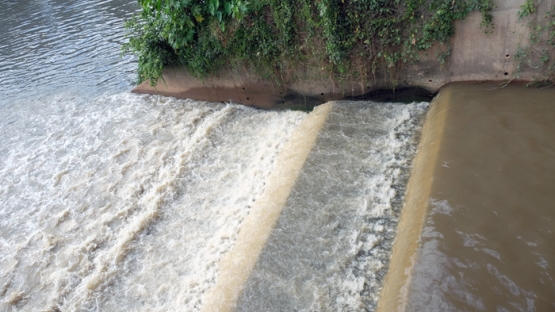Whether it consists of human waste or water from sinks, showers and household appliances, sewage is inescapable. Sewage, also referred to as domestic wastewater, is 99 percent water.
But it also contains a variety of contaminants such as harmful bacteria from faeces, as well as chemicals from cleaning and personal hygiene products and medicines.
There are already a variety of techniques in use around the world to treat wastewater before it is discharged. When used properly, these can mitigate its effect on the environment and reduce the risks to human health and aquatic life, including fish. However, as populations grow so does the amount of wastewater and environmental protection authorities are searching for new possibilities to tackle this issue.
With the support of the IAEA, thirteen countries are researching the use of electron beam irradiation, also known as e-beam, as an additional treatment method for domestic and industrial wastewater. This type of radiation technology is already used widely around the world for the disinfestation of food and the sterilisation of medical supplies.
"Despite the continuing advances in conventional wastewater treatment technology, the present level of treatment has proved insufficient in many countries to meet national conditions for safe discharge of water or its re-use," said IAEA Radiation Processing Specialist, Sunil Sabharwal.
According to Mr Sabharwal, the use of the e-beam technique for wastewater treatment has many advantages.
"Besides being highly effective, it doesn't need any chemicals or energy-intensive heating, and an e-beam irradiator can easily be set up at a conventional wastewater treatment plant," he said.
E-beam irradiation works by creating electron beams that irradiate the target objects to bring about desired changes. In the case of wastewater, irradiation would destroy harmful micro-organisms and break down toxic chemicals into smaller fragments, making wastewater safer before it is pumped into seas and rivers. Such treatment could also help countries to address water shortages, since treated water can be re-used.
The São Paulo region in Brazil is highly industrialised, with a population of 19 million. The city suffers from chronic water shortages and serious river pollution. Under an IAEA-supported project, a team of radiation processing specialists at Brazil's Nuclear Energy Research Institute (IPEN) is studying the use of e-beam irradiation to treat wastewater.
"The IAEA has been supporting our work in this field since the project started 18 years ago by providing us with equipment and training," said Maria Helena de Oliveira Sampa, a radiation processing expert at IPEN, which is managed by the Brazilian National Nuclear Energy Commission (CNEN).
"The aim of our project is to use radiation technology to support conventional treatments so that we end up with wastewater that's safer before it's discharged and also to prevent environmental damage."
Ms Sampa added that such treatment could make it possible to re-use wastewater in industry, in gardening, or for street cleaning.
"We need to be able to re-use water because of the chronic water shortages we have in our country. Many of our rivers have a high degree of contamination and this makes them unsuitable for many kinds of usage."
IPEN is cooperating with several treatment plants in the region operated by SABESP, the São Paulo State Sanitation Company, which receives 80 percent of São Paulo's domestic and industrial wastewater. At the plants, the wastewater goes through various treatments before being discharged.
SABESP's on-site biologist, Mariana Montezuma, works closely with IPEN, collecting samples to be taken back to IPEN's e-beam irradiation facility. She said the quality of the final effluent is in line with the levels set under Brazilian legislation but improvements could be made.
"If some contaminants stay in the wastewater, these will be in the final effluent, which is discharged in the river," she said.
"We hope we can further improve the methods for treatment by using this e-beam technology and that we can re-use the water."
The team at IPEN is confident that e-beam technology could be successfully implemented. The next phase of the project is to construct a mobile e-beam facility.
"We've done lot of research and it shows that the best results would be achieved by using irradiation as the final step before wastewater is discharged into rivers or redirected into a system for reuse," said Maria Helena de Oliveira Sampa.
"We would take the mobile e-beam irradiator to the plants and demonstrate on-site how this method works. This would hopefully encourage the facilities to install their own irradiators in the future."
According to the IAEA's Sunil Sabharwal, the use of radiation technologies leads to the development of industrial processes that are environmentally-friendly and commercially successful.
"The wastewater industry is looking for innovative concepts and technologies to the meet the emerging challenges," he said.
"Radiation technology, with its efficacy, efficiency and reliability, has the potential to offer a comprehensive solution to meet these challenges and ensure public health and safety."
By Louise Potterton, IAEA Office of Public Information and Communication


